Abstract
1. The possible pressor effect of vasopressin immediately after acute haemorrhage has been studied using anaesthetized Brattleboro rats with diabetes insipidus and rats of the Long Evans parent strain.
2. A blood loss of 0·5% of the body weight caused a significant decrease in mean arterial blood pressure, measured 10 min later, in Brattleboro rats, whereas this degree of haemorrhage was non-hypotensive in the control Long Evans rats. Following subsequent blood losses (each of 0·5% of the body weight), mean arterial blood pressure in Brattleboro rats was always significantly lower than in Long Evans rats.
3. While no antidiuretic activity was at any time found in the plasma of Brattleboro rats, haemorrhages greater than 1% of the body weight were associated with marked increases in plasma arginine vasopressin (AVP) of Long Evans rats.
4. When Brattleboro and Long Evans rats were subjected to a single haemorrhage of 2% of the body weight, the immediate decrease in arterial blood pressure was similar in the two groups. However, 5 and 10 min after the haemorrhage the arterial blood pressure was significantly higher in the Long Evans rats. When vasopressin was infused into Brattleboro rats so that plasma levels of the hormone approached those found in Long Evans rats, the mean arterial blood pressure 0, 5 and 10 min after haemorrhage was similar to that in the Long Evans animals.
5. It is concluded that in the anaesthetized rat, vasopressin plays an important role in the regulation of arterial blood pressure during the period immediately following acute haemorrhage.
Full text
PDF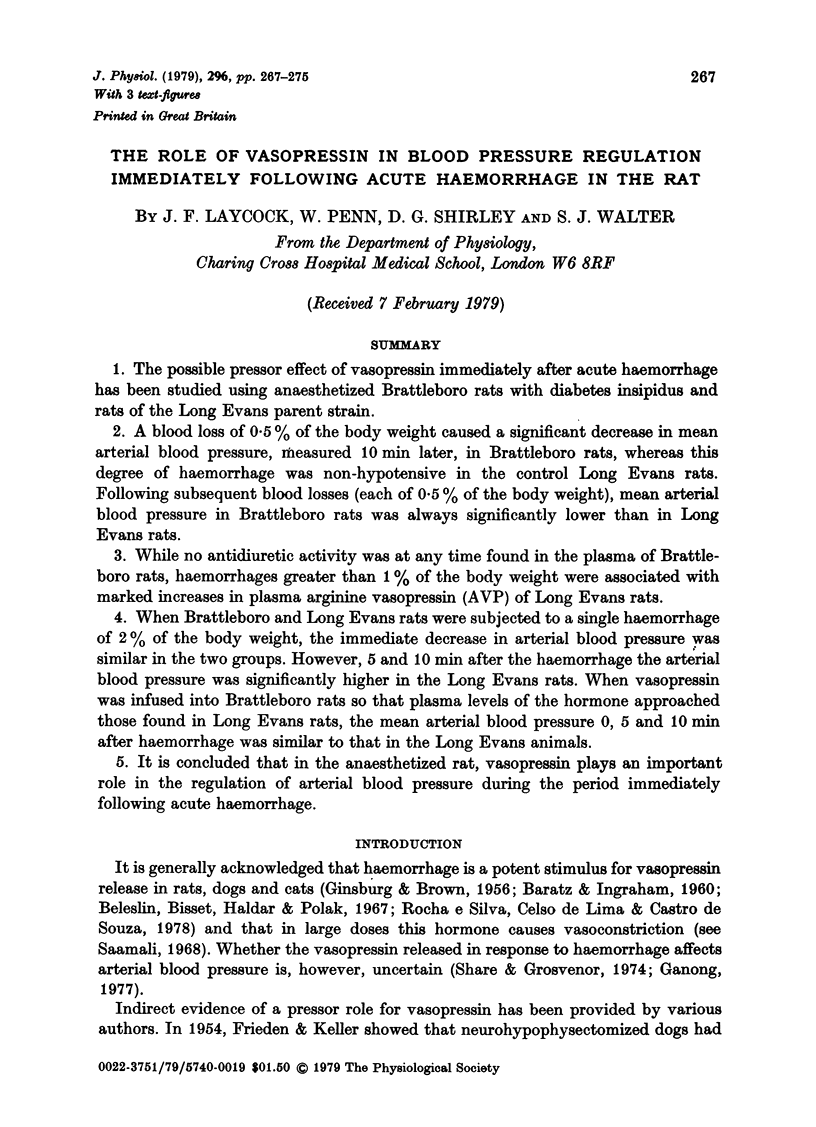
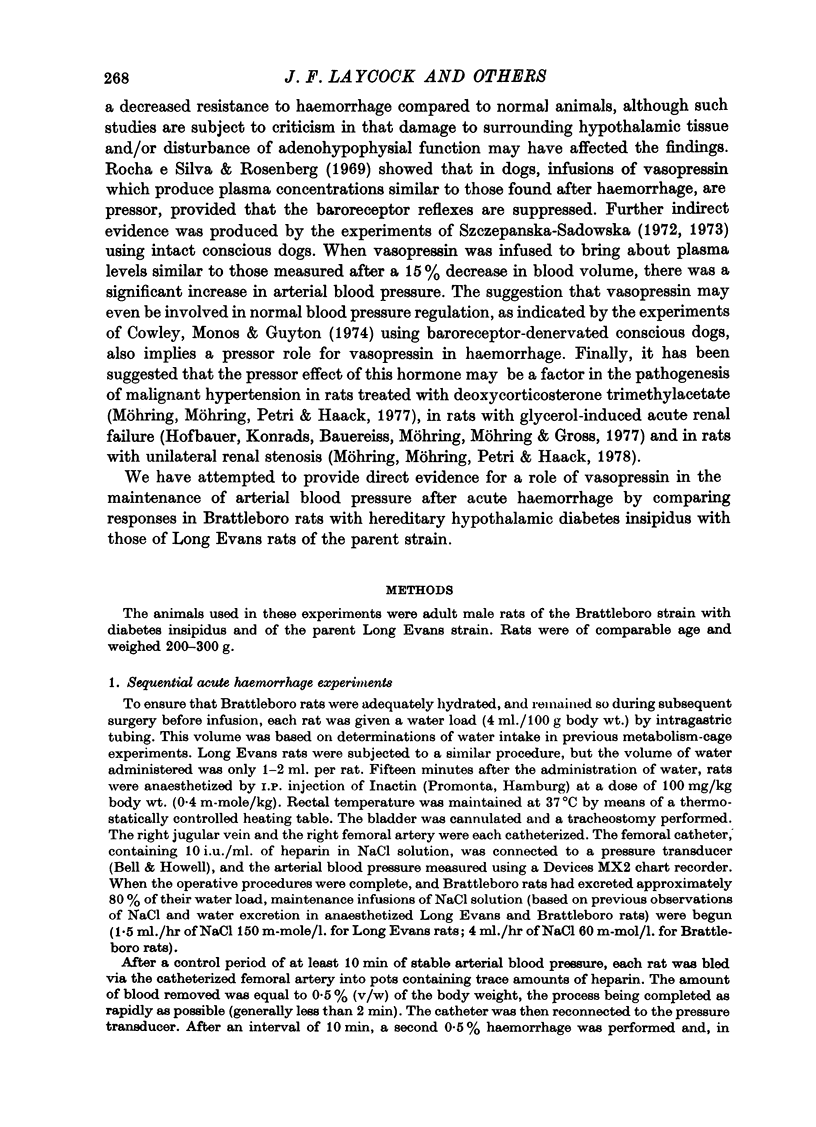
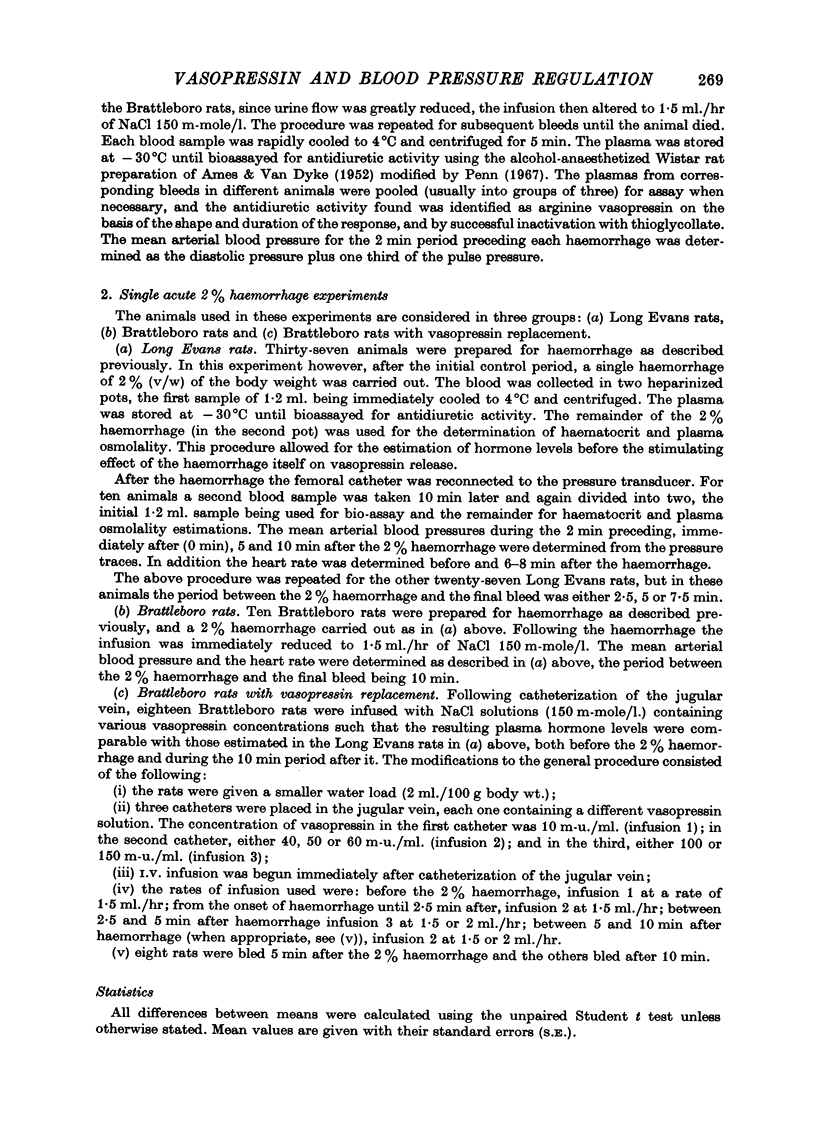
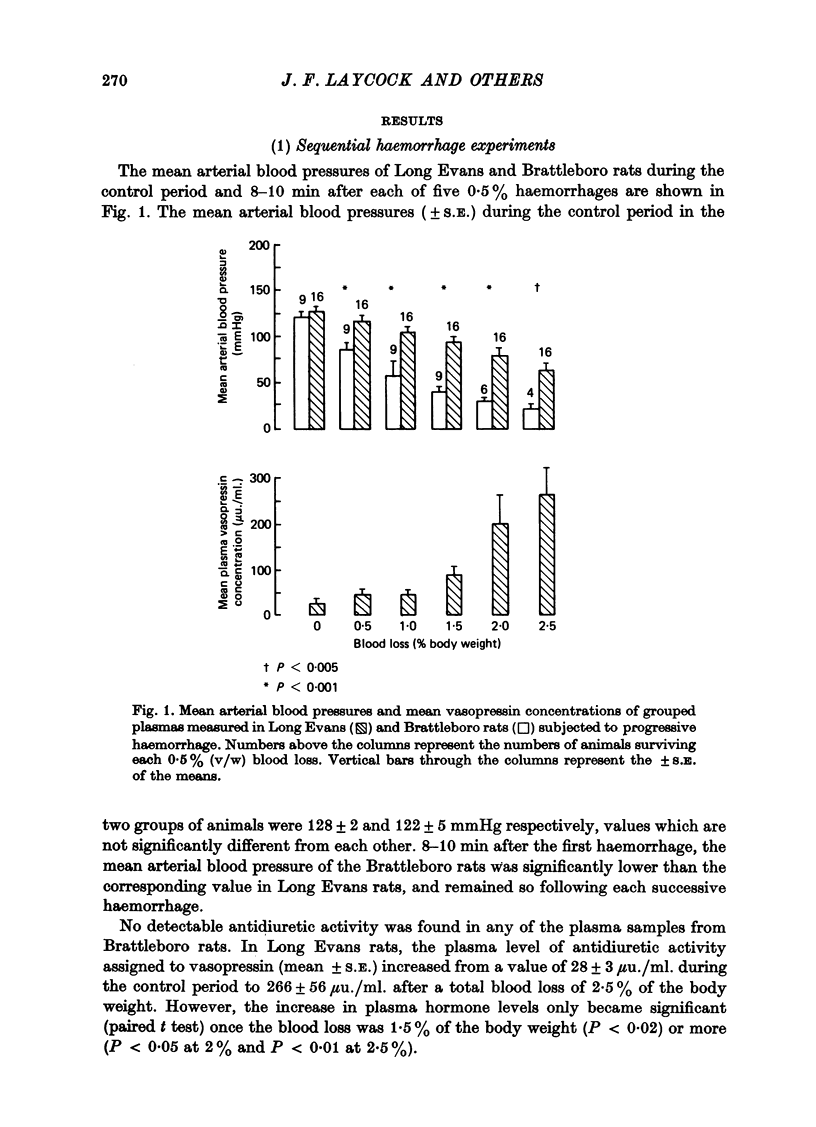
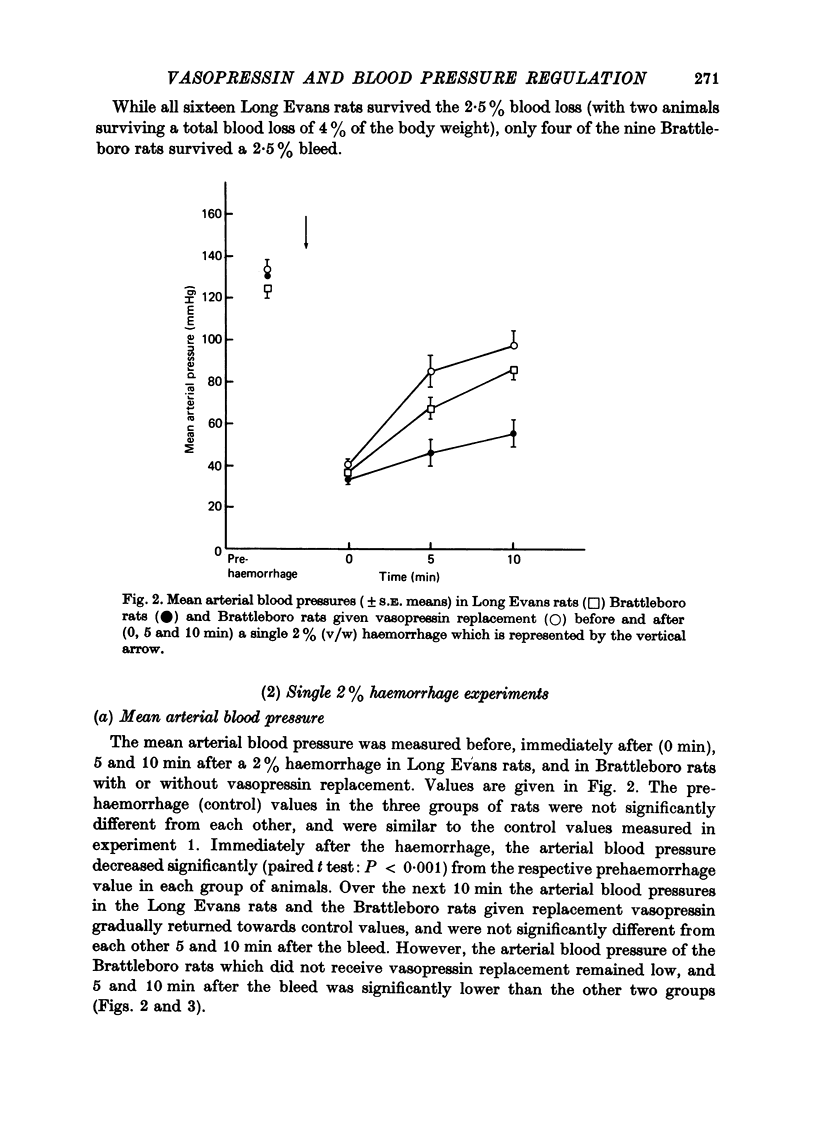
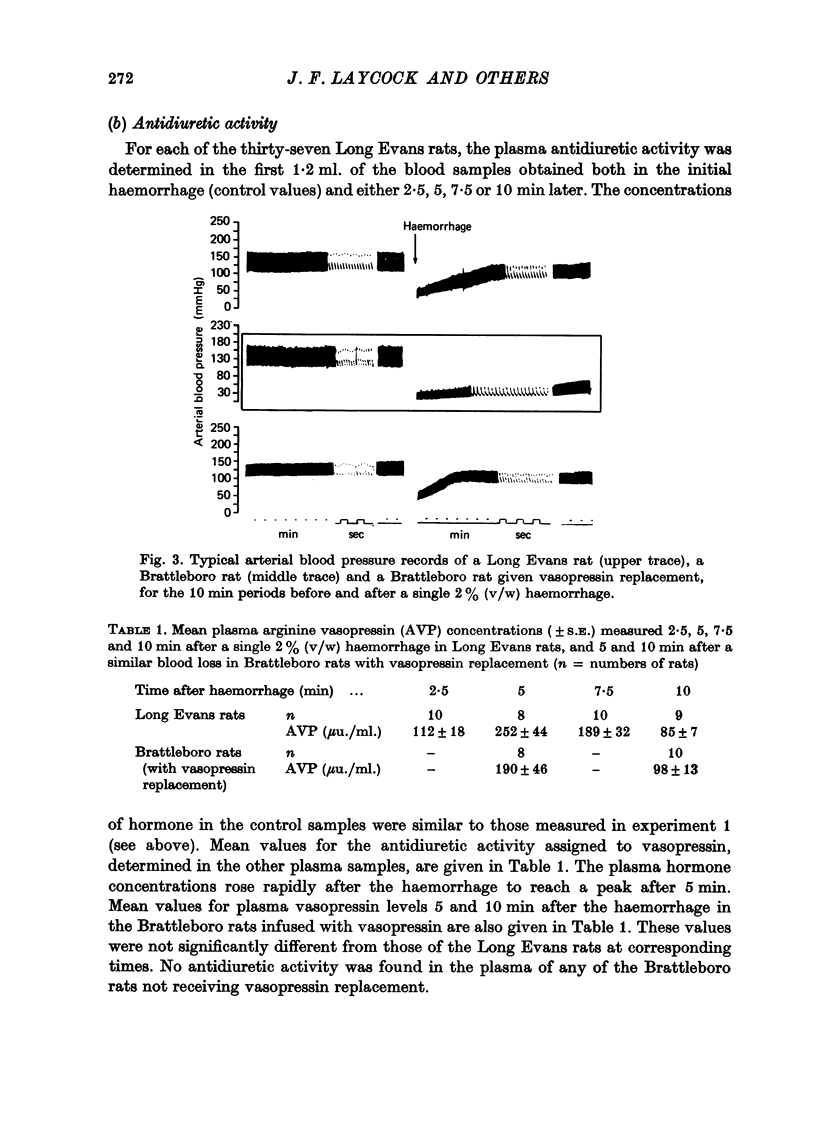
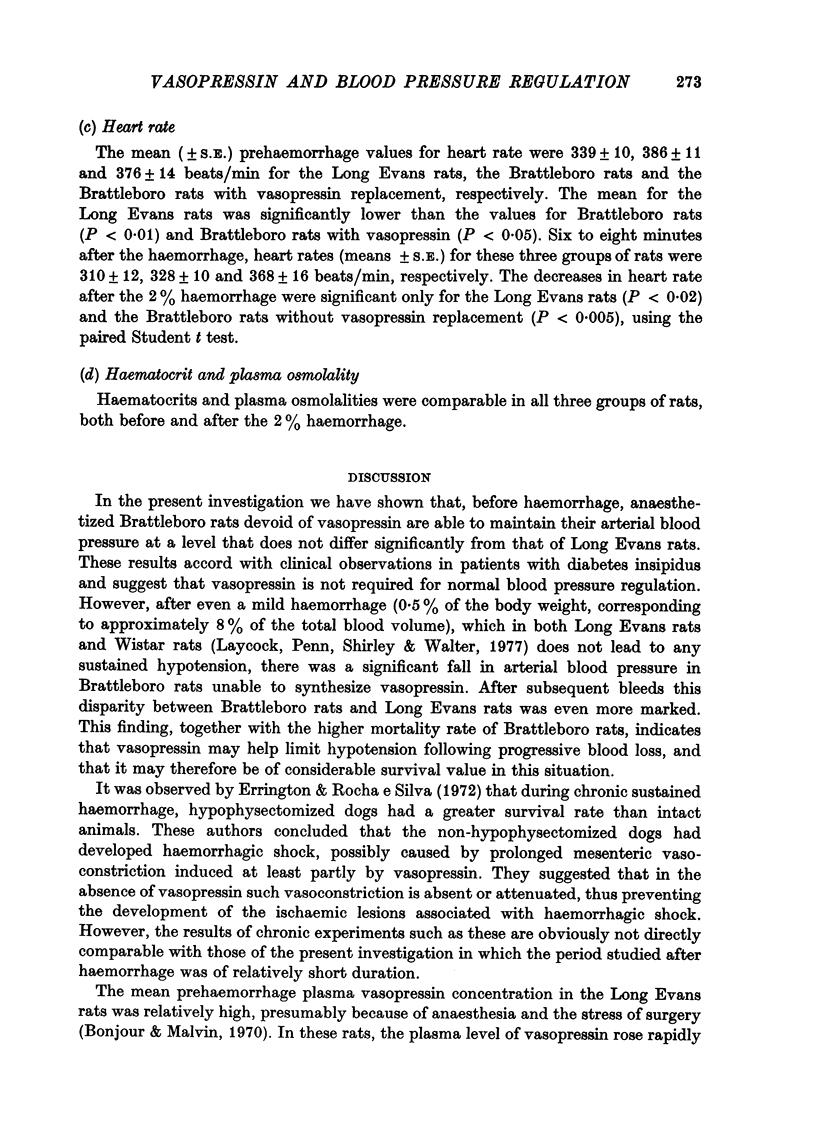
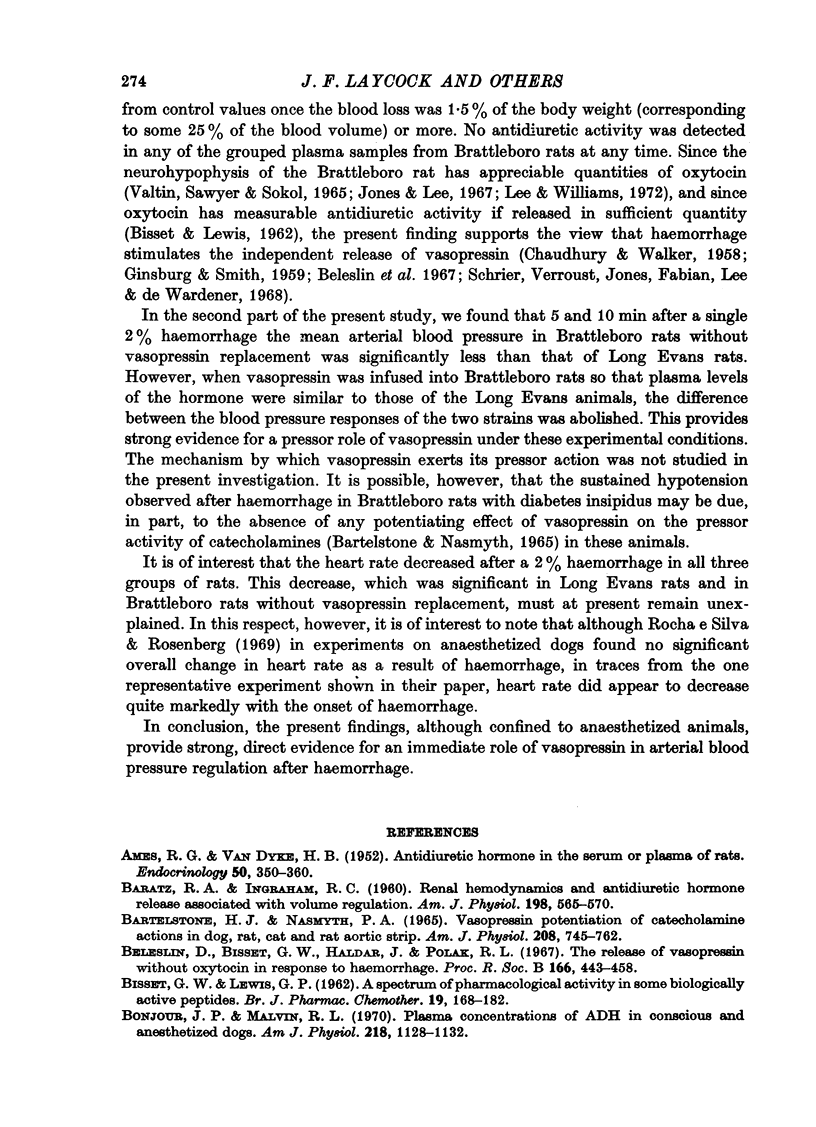
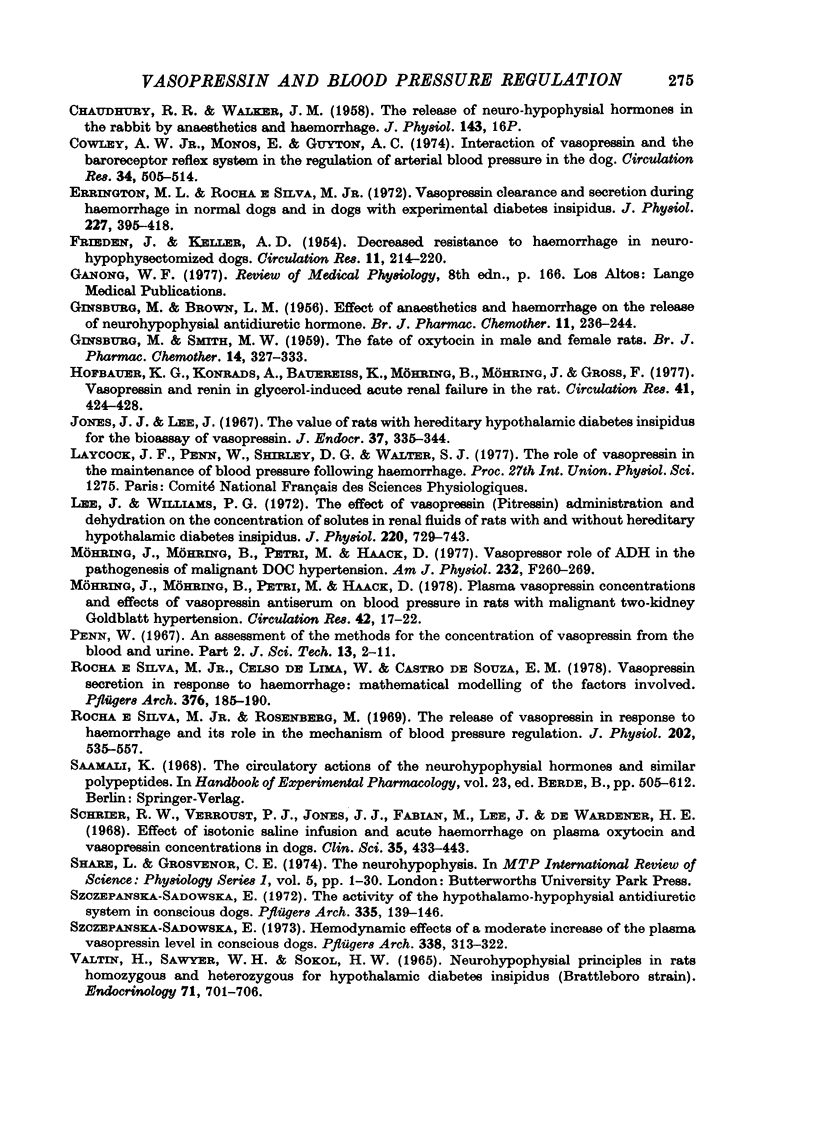
Selected References
These references are in PubMed. This may not be the complete list of references from this article.
- AMES R. G., VAN DYKE H. B. Antidiuretic hormone in the serum or plasma of rats. Endocrinology. 1952 Mar;50(3):350–360. doi: 10.1210/endo-50-3-350. [DOI] [PubMed] [Google Scholar]
- BARATZ R. A., INGRAHAM R. C. Renal hemodynamics and antidiuretic hormone release associated with volume regulation. Am J Physiol. 1960 Mar;198:565–570. doi: 10.1152/ajplegacy.1960.198.3.565. [DOI] [PubMed] [Google Scholar]
- BARTELSTONE H. J., NASMYTH P. A. VASOPRESSIN POTENTIATION OF CATECHOLAMINE ACTIONS IN DOG, RAT, CAT, AND RAT AORTIC STRIP. Am J Physiol. 1965 Apr;208:754–762. doi: 10.1152/ajplegacy.1965.208.4.754. [DOI] [PubMed] [Google Scholar]
- BISSET G. W., LEWIS G. P. A spectrum of pharmacological activity in some biologically active peptides. Br J Pharmacol Chemother. 1962 Aug;19:168–182. [PMC free article] [PubMed] [Google Scholar]
- BROWN L. M., GINSBURG M. Effect of anaesthetics and haemorrhage on the release of neurohypophysial antidiuretic hormone. Br J Pharmacol Chemother. 1956 Sep;11(3):236–244. doi: 10.1111/j.1476-5381.1956.tb01060.x. [DOI] [PMC free article] [PubMed] [Google Scholar]
- Bonjour J. P., Malvin R. L. Plasma concentrations of ADH in conscious and anesthetized dogs. Am J Physiol. 1970 Apr;218(4):1128–1132. doi: 10.1152/ajplegacy.1970.218.4.1128. [DOI] [PubMed] [Google Scholar]
- Cowley A. W., Jr, Monos E., Guyton A. C. Interaction of vasopressin and the baroreceptor reflex system in the regulation of arterial blood pressure in the dog. Circ Res. 1974 Apr;34(4):505–514. doi: 10.1161/01.res.34.4.505. [DOI] [PubMed] [Google Scholar]
- Errington M. L., Rocha e Silva M., Jr Vasopressin clearance and secretion during haemorrhage in normal dogs and in dogs with experimental diabetes insipidus. J Physiol. 1972 Dec;227(2):395–418. doi: 10.1113/jphysiol.1972.sp010039. [DOI] [PMC free article] [PubMed] [Google Scholar]
- FRIEDEN J., KELLER A. D. Decreased resistance to hemorrhage in neurohypophysectomized dogs. Circ Res. 1954 May;2(3):214–220. doi: 10.1161/01.res.2.3.214. [DOI] [PubMed] [Google Scholar]
- GINSBURG M., SMITH M. W. The fate of oxytocin in male and female rats. Br J Pharmacol Chemother. 1959 Sep;14:327–333. doi: 10.1111/j.1476-5381.1959.tb00252.x. [DOI] [PMC free article] [PubMed] [Google Scholar]
- Hofbauer K. G., Konrads A., Bauereiss K., Möhring B., Möhring J., Gross F. Vasopressin and renin in glycerol-induced acute renal failure in the rat. Circ Res. 1977 Oct;41(4):424–428. doi: 10.1161/01.res.41.4.424. [DOI] [PubMed] [Google Scholar]
- Jones J. J., Lee J. The value of rats with hereditary hypothalamic diabetes insipidus for the bioassay of vasopressin. J Endocrinol. 1967 Mar;37(3):335–344. doi: 10.1677/joe.0.0370335. [DOI] [PubMed] [Google Scholar]
- Lee J., Williams P. G. The effect of vasopressin (Pitressin) administration and dehydration on the concentration of solutes in renal fluids of rats with and without hereditary hypothalamic diabetes insipidus. J Physiol. 1972 Feb;220(3):729–743. doi: 10.1113/jphysiol.1972.sp009732. [DOI] [PMC free article] [PubMed] [Google Scholar]
- Möhring J., Möhring B., Petri M., Haack D. Plasma vasopressin concentrations and effects of vasopressin antiserum on blood pressure in rats with malignant two-kidney Goldblatt hypertension. Circ Res. 1978 Jan;42(1):17–22. doi: 10.1161/01.res.42.1.17. [DOI] [PubMed] [Google Scholar]
- Möhring J., Möhring B., Petri M., Haack D. Vasopressor role of ADH in the pathogenesis of malignant DOC hypertension. Am J Physiol. 1977 Mar;232(3):F260–F269. doi: 10.1152/ajprenal.1977.232.3.F260. [DOI] [PubMed] [Google Scholar]
- Rocha E Silva M., Jr, Rosenberg M. The release of vasopressin in response to haemorrhage and its role in the mechanism of blood pressure regulation. J Physiol. 1969 Jun;202(3):535–557. doi: 10.1113/jphysiol.1969.sp008826. [DOI] [PMC free article] [PubMed] [Google Scholar]
- Rocha e Silva M., Jr, Celso de Lima W., Castro de Souza E. M. Vasopressin secretion in response to haemorrhage: mathematical modelling of the factors involved. Pflugers Arch. 1978 Sep 6;376(2):185–190. doi: 10.1007/BF00581582. [DOI] [PubMed] [Google Scholar]
- Schrier R. W., Verroust P. J., Jones J. J., Fabian M., Lee J., De Wardener H. E. Effect of isotonic saline infusion and acute haemorrhage on plasma oxytocin and vasopressin concentrations in dogs. Clin Sci. 1968 Dec;35(3):433–443. [PubMed] [Google Scholar]
- Szczepańska-Sadowska E. Hemodynamic effects of a moderate increase of the plasma vasopressin level in conscious dogs. Pflugers Arch. 1973;338(4):313–322. doi: 10.1007/BF00586073. [DOI] [PubMed] [Google Scholar]
- Szczepańska-Sadowska E. The activity of the hypothalamo-hypophysial antidiuretic system in conscious dogs. I. The influence of isoosmotic blood volume changes. Pflugers Arch. 1972;335(2):139–146. doi: 10.1007/BF00592040. [DOI] [PubMed] [Google Scholar]
- Valtin H., Sawyer W. H., Sokol H. W. Neurohypophysial principles in rats homozygous and heterozygous for hypothalamic diabetes insipidus (Brattleboro strain). Endocrinology. 1965 Oct;77(4):701–706. doi: 10.1210/endo-77-4-701. [DOI] [PubMed] [Google Scholar]


